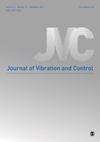反弹碰撞冲击放大器的放大效果和影响因素
IF 2.4
3区 工程技术
Q2 ACOUSTICS
引用次数: 0
摘要
在强冲击环境下,传统的冲击测试平台无法获得较高的峰值加速度,导致产品在测试过程中受到阻碍。本文旨在建立可用于强冲击环境的反弹碰撞冲击放大器,并研究其机理、影响因素和放大效果。通过将动态接触理论与经典碰撞理论相结合,考虑能量损失并引入碰撞恢复系数,建立了反弹-碰撞冲击放大器的运动学模型。得出了计算加速度和加速度放大的理论公式。分别研究了碰撞持续时间比、放大平台与下落平台的质量比以及预留间隙对加速度放大倍数的影响。最后,进行了可行性试验验证。试验结果表明,反弹碰撞冲击放大器运动模型与理论模型非常吻合。加速度放大率随质量比的增大而减小,随碰撞持续时间比的增大而增大。可以找到理想的预留间隙,使放大平台的加速度达到最大值。选择理想的预留间隙更有利于冲击放大。本文章由计算机程序翻译,如有差异,请以英文原文为准。
Amplification effect and influencing factors of rebound-collision impact amplifier
In strong impact environment, traditional impact test platform cannot obtain high peak acceleration, resulting in products being hindered in the testing process. The objective of this paper is to build the rebound-collision impact amplifier that can be used in a strong impact environment and to investigate its mechanism, influencing factors, and amplification effect. The kinematic model of the rebound-collision impact amplifier was established by combining dynamic contact theory with classical collision theory, considering energy loss, and introducing collision recovery coefficient. A theoretical formula for calculating acceleration and acceleration magnification was derived. The effects of the collision duration ratio, the mass ratio of the amplification platform to the falling platform, and the reserved clearance on the acceleration magnification were investigated, respectively. Finally, the feasibility test was verified. The test results show that the rebound-collision impact amplifier motion model is in good agreement with the theoretical model. Acceleration magnification decreases with increasing mass ratio and increases with increasing collision duration ratio. The ideal reserved clearance can be found to make the acceleration of the amplification platform obtain the maximum value. Selecting the ideal reserved clearance is more conducive to impact amplification.
求助全文
通过发布文献求助,成功后即可免费获取论文全文。
去求助
来源期刊

Journal of Vibration and Control
工程技术-工程:机械
CiteScore
5.20
自引率
17.90%
发文量
336
审稿时长
6 months
期刊介绍:
The Journal of Vibration and Control is a peer-reviewed journal of analytical, computational and experimental studies of vibration phenomena and their control. The scope encompasses all linear and nonlinear vibration phenomena and covers topics such as: vibration and control of structures and machinery, signal analysis, aeroelasticity, neural networks, structural control and acoustics, noise and noise control, waves in solids and fluids and shock waves.
 求助内容:
求助内容: 应助结果提醒方式:
应助结果提醒方式:


